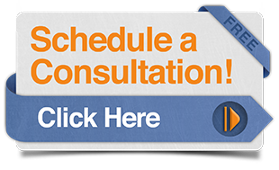
Content marketing is an effective way to raise brand awareness, attract customers, educate people about your products, services, or industry, generate leads, and increase sales for your business. It's important, however, to spend time planning your strategy to lead your website visitors from being complete strangers to your brand through the buyer’s journey to become your customers. In this two-part series, we’re giving you the basics you need to begin building your content marketing strategy.
Part Two: The Consideration Stage
Once you've attracted website visitors with SEO, built up your online presence and authority with blogging, and begun spreading the word through social media, you can begin to turn the attention you’re attracting into actual engagement with your business.
When visitors arrive at your website and find information that they’re looking for, you want to have clear next steps in place for them to take while there. Those next steps will look different for different businesses as well as for different customers of a particular business. Some types of products and services are purchased quickly and without a great deal of research or hesitation, while others tend to be heavily researched by consumers. Likewise, some prospects are looking to buy immediately, while others want to take their time and gather information. It’s important to understand both of these aspects of how your company gets business and build your site to accommodate the various types of potential customers who come your way.
Generating Leads
For example, on your site’s home page, you should have an easy way for customers to get in touch with you immediately as well as clear paths to find exactly the information they’re looking for before they reach out to you. As a user navigates through the pages of your site, each should offer at least one logical next step, such as, “Download our free eBook to learn more about _____,” “Schedule a free consultation,” or “Register for a free trial.” When visitors take you up on one of these offers, you’ll want to have a simple form in place to take their contact information. When they fill it out, you get new leads for your business!
Offering more in-depth information in downloadable form is an effective way to boost your brand authority, engage with website visitors, and build relationships with them. For example, visitors to a contractor’s website who are interested in adding on to their homes would likely value a free eBook that provides detailed information about how to plan a home addition. If they find the information helpful and decide to move forward with the project, the company that provided the eBook will have a distinct edge over the competition. You can provide in-depth information in several different formats, such as checklists, guides, infographics, case studies, white papers, and videos. Choose formats that fit your business and its audience.
Lead Nurturing
Once you have a new lead, you can begin directly communicating with them, nurturing your relationship by continuing to provide the information they want when they want it so they can make informed buying decisions. Based on the information you obtain about their interests, you can send targeted communications to your contacts that anticipate what they will likely need next. For example, if a contact downloaded your eBook on building a home addition, you might follow up with an email that offers a free consultation, briefly highlighting the benefits of your company’s remodeling services.
When you tailor your online content to meet the needs of your potential customers at each stage of their buying decision, your website becomes capable of turning strangers into warm leads 24 hours a day, 7 days a week. To learn more about how to make your website your best employee, click here for our free eBook. To learn how Blue Frog Marketing can help you get there, click below for a free consultation. (You see how I did that?)



